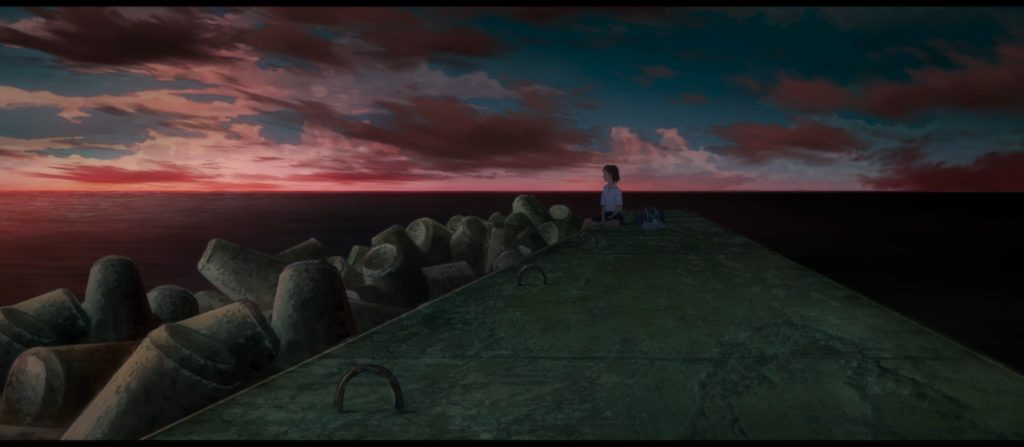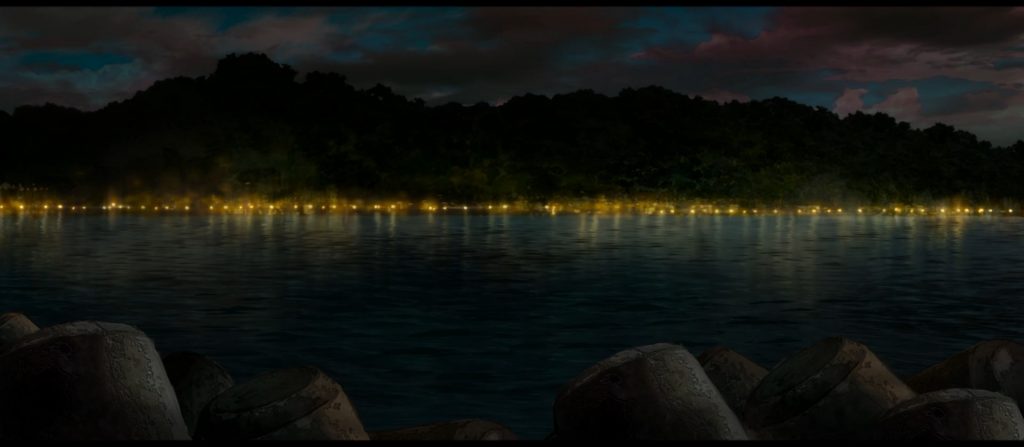2019 Japanese anime movie “Children of the Sea” (original title: 海獣の子供, which translates roughly as “Children of Sea Monsters”) is set in a fictitious island in the Okinawa region of Japan. The movie directed by Ayumu Watanabe puts a lot of effort into creating the image of a culture and a way of life, that is aquatic or located in a fluid continuum between dry land and water, the city and the sea. Here are screen shots from two scenes of intense tropical rainstorm that blur the distinction between land and sea.
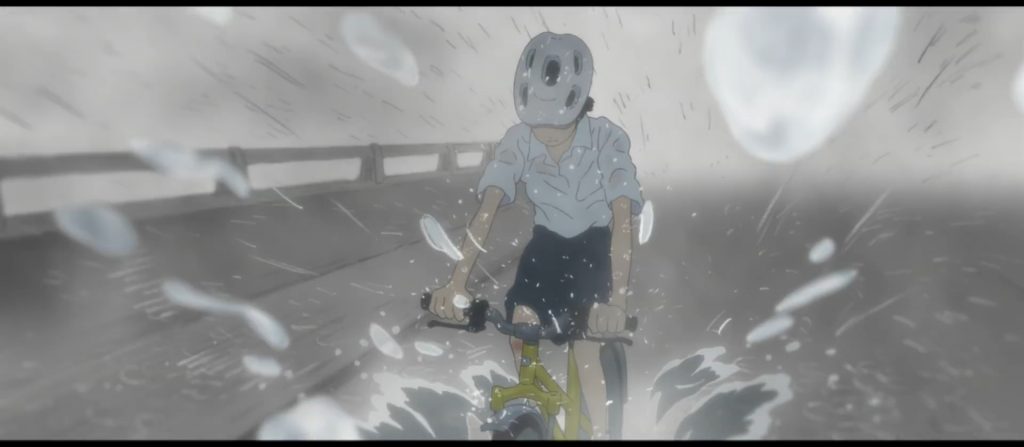
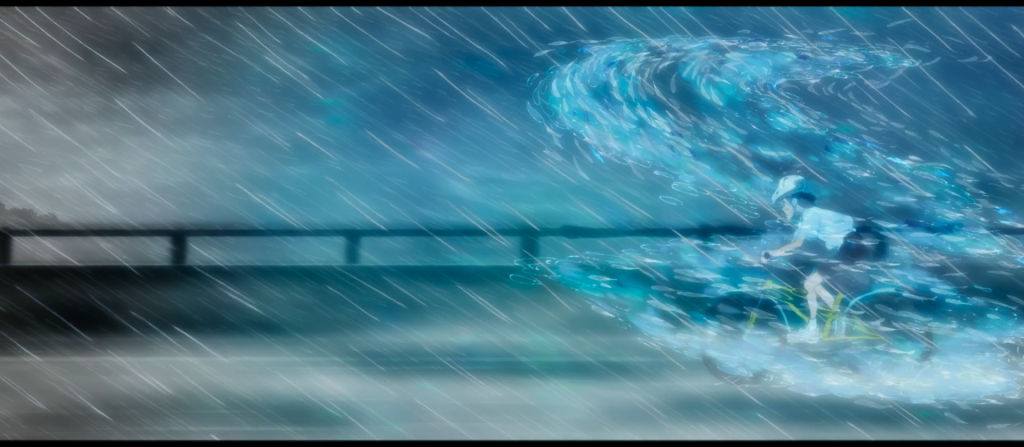
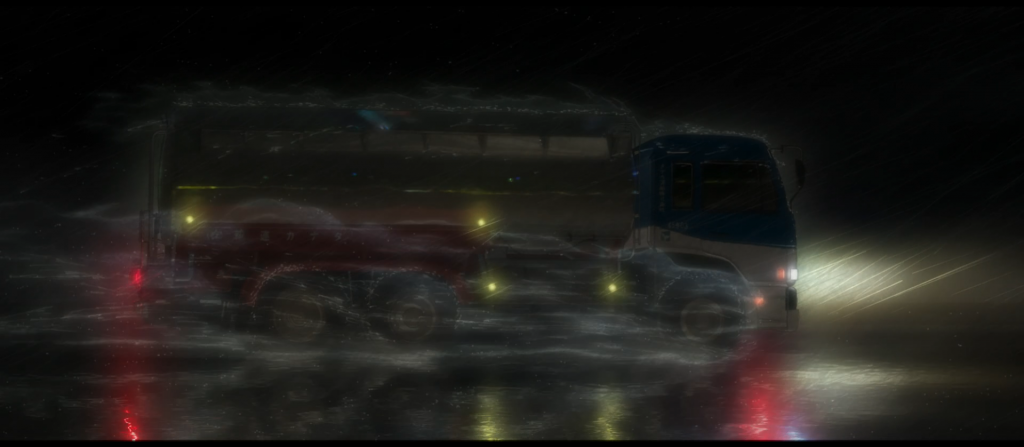
Another noteworthy scene is the following, set on a pier that is aligned with concrete tetrapopds. These tetrapods have been used since the 1950s all over the world to protect coasts against erosion and flooding. They are particularly prominent across Okinawa and have come to define the look of the coasts there. (See the wiki article here)
Since the movie’s plot is about the meeting and friendship between two brothers born in the sea and a city girl and the girl’s eventual emergence into the underwater world, the tripods here seem to symbolize the community’s effort to maintain the separation between land and sea and protect it’s people from the forces bur also the allure of the ocean.
